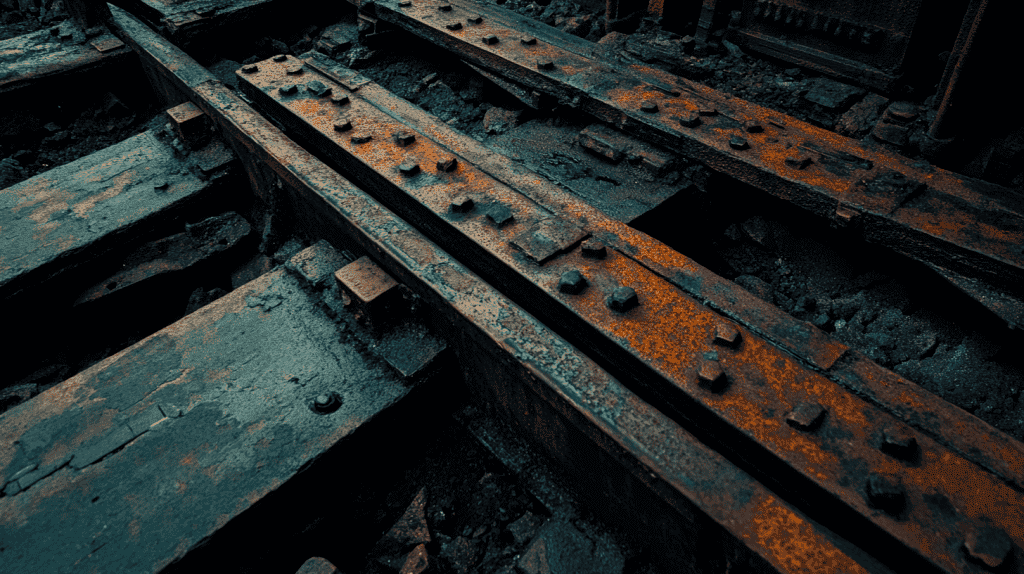Railroads play a crucial role in the transportation industry, moving goods and passengers across vast distances. However, with this great responsibility comes the need for strict regulatory compliance, especially when it comes to environmental protection. This is where track pans become an essential piece of railroad equipment, aiding railroads in meeting various regulatory requirements.
Understanding Railroad Track Pans
What Are Track Pans?
Track pans are specialized containment systems installed between and alongside railroad tracks. They are designed to capture any liquids, such as fuel or oil, that may leak or spill from railcars or locomotives. By preventing these substances from reaching the ground, track pans help to protect the environment and ensure compliance with environmental regulations.
The Importance of Track Pans
Track pans are not just a precautionary measure; they are a critical component of a railroad’s environmental protection strategy. Their primary function is to prevent contaminants from entering the soil and groundwater, thus safeguarding the natural environment. This aligns with federal and state regulations aimed at minimizing environmental impact.

Regulatory Compliance in the Railroad Industry
Key Environmental Regulations
Railroads are subject to a variety of environmental regulations that dictate how they must manage and mitigate potential environmental hazards. Some of the key regulations include:
- The Clean Water Act (CWA): This federal law governs water pollution, making it illegal to discharge pollutants into the waters of the United States without a permit. Track pans help railroads comply by capturing spills before they can reach waterways.
- The Resource Conservation and Recovery Act (RCRA): This law provides the framework for the proper management of hazardous and non-hazardous solid waste. Track pans are essential for capturing hazardous spills, ensuring they are properly contained and disposed of.
- State Regulations: In addition to federal laws, railroads must comply with state-specific environmental regulations, which may include additional requirements for spill prevention and response.
How Track Pans Aid Compliance
Track pans are engineered to meet the stringent requirements set forth by these regulations. By installing track pans, railroads can demonstrate their commitment to environmental stewardship and regulatory compliance. This is not only beneficial for the environment but also helps railroads avoid costly fines and legal issues associated with non-compliance.
The Benefits of Using Track Pans
Environmental Protection
The most significant benefit of using track pans is the protection of the environment. By capturing spills and leaks, track pans prevent harmful substances from contaminating soil and water sources. This is crucial in preserving ecosystems and protecting wildlife.
Financial Savings
While the installation of track pans may require an initial investment, it can lead to substantial financial savings in the long run. By preventing spills and leaks, railroads can avoid the high costs associated with environmental cleanup and potential fines for regulatory violations.
Enhanced Safety
Track pans contribute to a safer working environment for railroad employees. By containing spills and leaks, they reduce the risk of accidents and injuries caused by slippery surfaces or hazardous materials.
Improved Public Image
Railroads that prioritize environmental protection and regulatory compliance are often viewed more favorably by the public. By using track pans, railroads can enhance their reputation as responsible and environmentally conscious operators.
Types of Track Pans
Modular Track Pans
Modular track pans are a popular choice due to their flexibility and ease of installation. They consist of individual sections that can be connected to create a customized containment system, making them suitable for various track layouts and lengths.
Custom Track Pans
For railroads with unique requirements, custom track pans can be designed and manufactured to meet specific needs. These pans offer tailored solutions for challenging installations or sites with specific environmental concerns.

Installation and Maintenance of Track Pans
Installation Process
Installing track pans requires careful planning and consideration of the specific site conditions. It is essential to ensure that the pans are properly aligned and securely anchored to prevent any movement or shifting that could compromise their effectiveness.
Regular Maintenance
To maintain their effectiveness, track pans require regular inspection and maintenance. This includes checking for any signs of wear or damage, ensuring that the drainage systems are functioning correctly, and promptly addressing any issues that may arise.
Conclusion
Track pans are an indispensable component of railroad operations, playing a vital role in regulatory compliance and environmental protection. By capturing spills and leaks, they help railroads meet the stringent requirements of federal and state regulations while also providing significant benefits in terms of safety, cost savings, and public perception. As the railroad industry continues to prioritize sustainability and environmental stewardship, the use of track pans will remain an essential practice for responsible railroads.
Shop for Railroad Track Pans at Absorbents Online
Enhance your railroad’s environmental protection efforts by investing in high-quality track pans from Absorbents Online. Our comprehensive selection of containment solutions ensures that you find the perfect fit for your specific needs, whether you’re looking for modular or custom-designed track pans. By choosing Absorbents Online, you gain access to expert advice, competitive pricing, and a commitment to quality that guarantees the safety and compliance of your operations. Don’t wait—visit Absorbents Online now to explore our range of railroad track pans and take a proactive step towards preserving the environment and maintaining regulatory compliance.